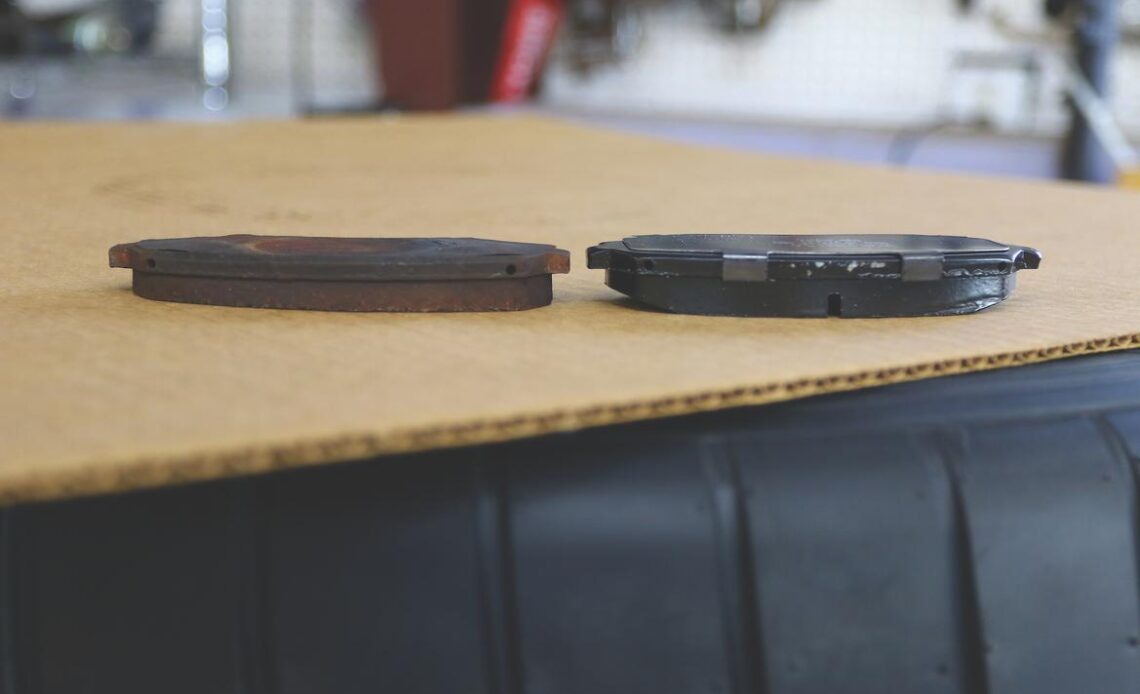Spend any time at the track and you’re bound to hear about–or even experience–brake fade. When 3500-pound machines get into triple-digit speeds, repeatedly turning all that kinetic energy into heat is going to have some side effects. Knowing how to spot the various heat-related failure modes–and how to correct them–is key to success in braking zones.
Pad Fade: Hard Pedal Yet Not Enough Stopping
Pad fade occurs when the excess temps reduce the friction between the brake pads and the rotor surface. Typically, the extreme heat causes an outgassing of the binding material used to make a brake pad.
That gas layer reduces the friction at the point of contact between the pad and the rotor, resulting in reduced stopping force. Other possible pad failure modes from too much heat: The pad material can also liquify a microscopic surface layer or simply crumble to a fine dust.
Typically, pad fade is associated with a firm brake pedal yet insufficient stopping force–basically, brake pedal travel remains unchanged because the calipers are actuating normally, yet the pad can no longer deliver the desired stopping power. Pad fade frequently results when the pads are inappropriate for the level of heat they’re dealing with.
The wrong brake pads–the incorrect compound or just ones that have glazed over–can cause fade. Photography Credit: David S. Wallens
Pad fade can also lead to second-order negative effects on the braking system. One of the most common is usually referred to as “glazing” of the rotor. In these cases, the extreme temperatures produced by the pad and rotor interface can cause the crystalline structure of the iron rotor to change: Carbon atoms become excited enough to bond to iron atoms, producing a carbide compound called cementite.
If you’ve ever been too aggressive with too dull of a drill bit going into unlubricated material, you’re familiar with the concept of work hardening. Well, that’s basically what’s going on here. These cementite deposits are extremely hard but extremely brittle. They’re also poor heat conductors and have a much different coefficient of friction than the rest of the rotor.
So, if you’ve experienced heat-related pad fade failure and are left with a pulsating brake pedal–what many people incorrectly call a warped rotor–you’ve likely deposited these super-hardened patches…
Click Here to Read the Full Original Article at Grassroots Motorsports Online Articles…

